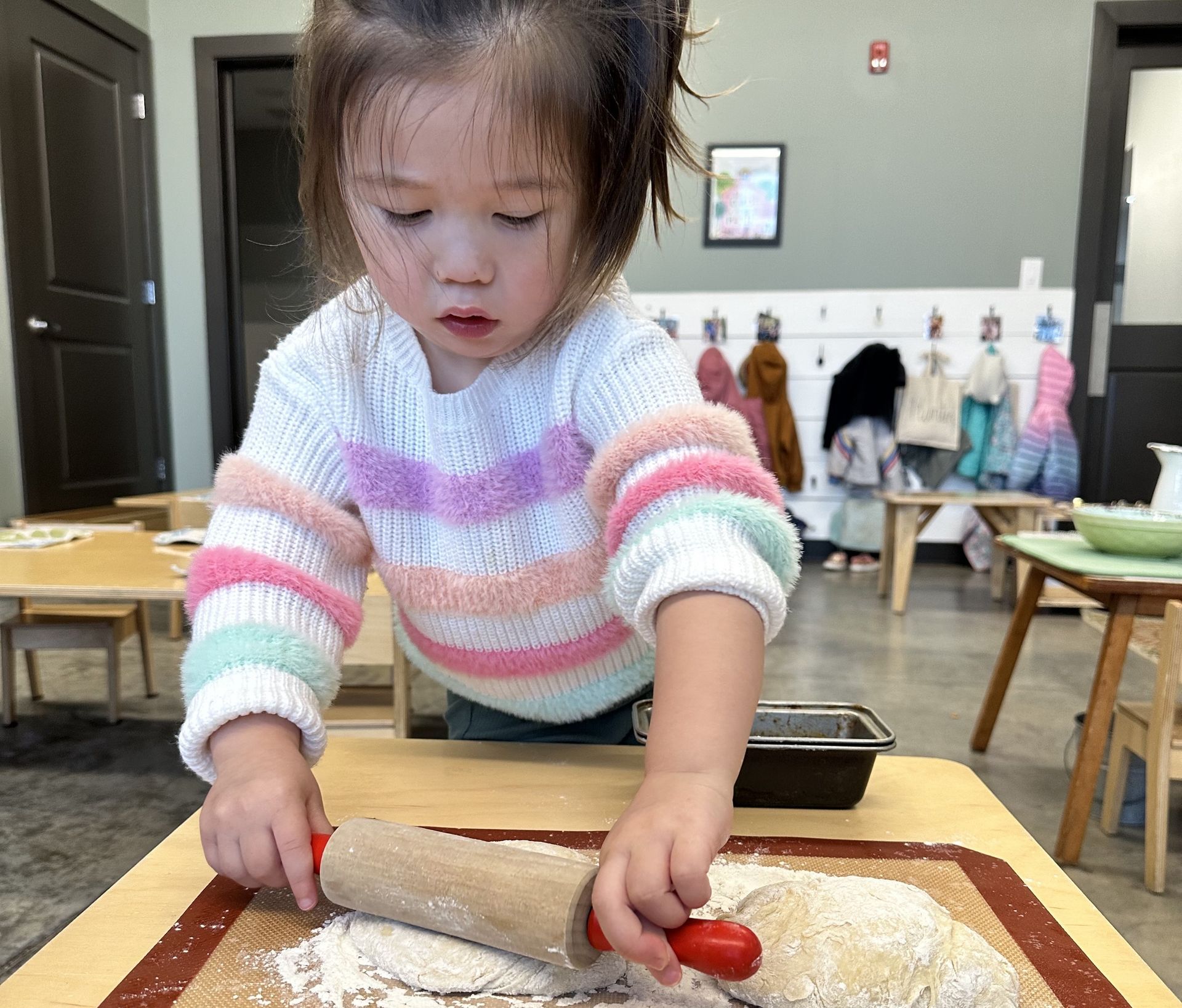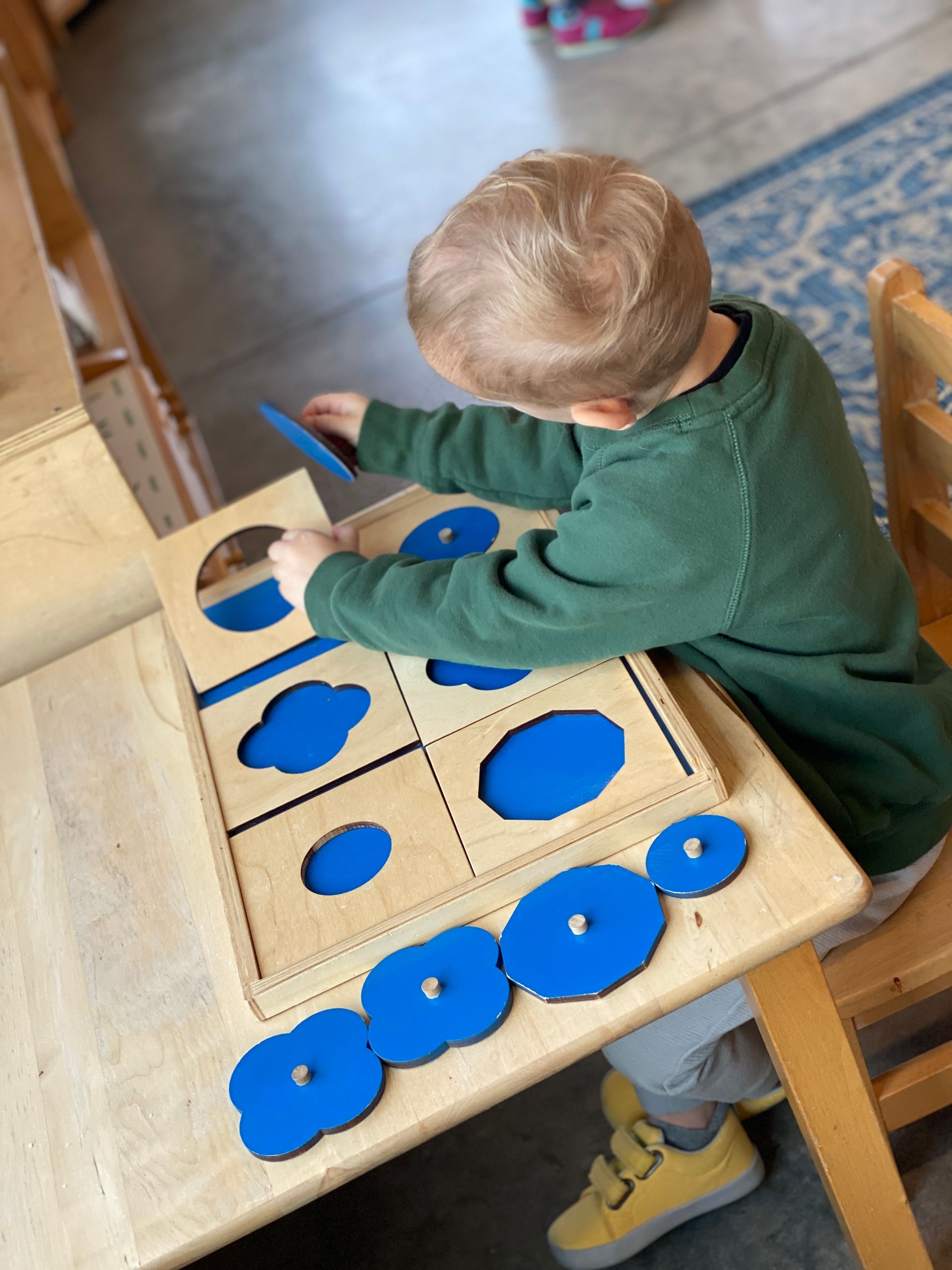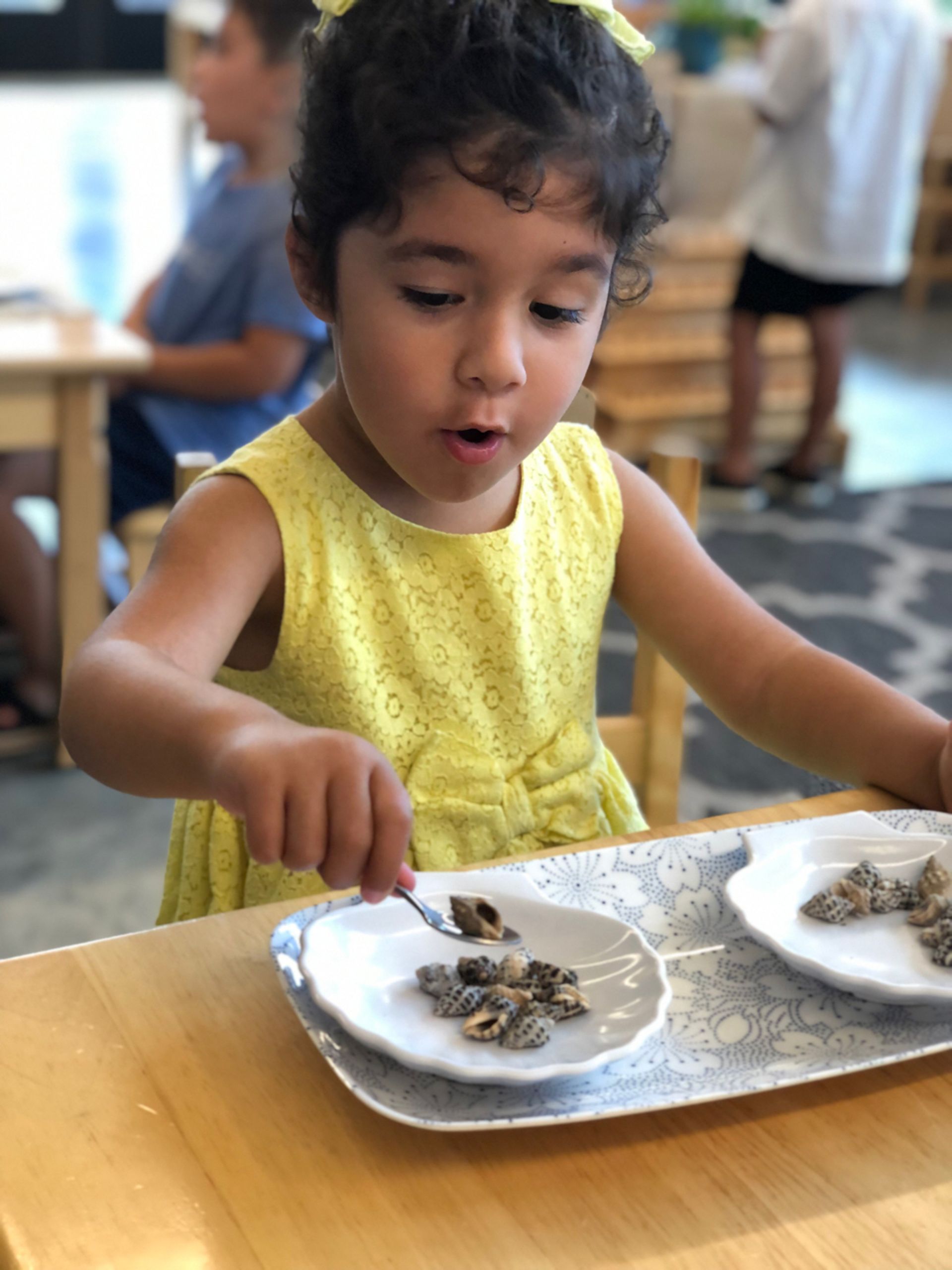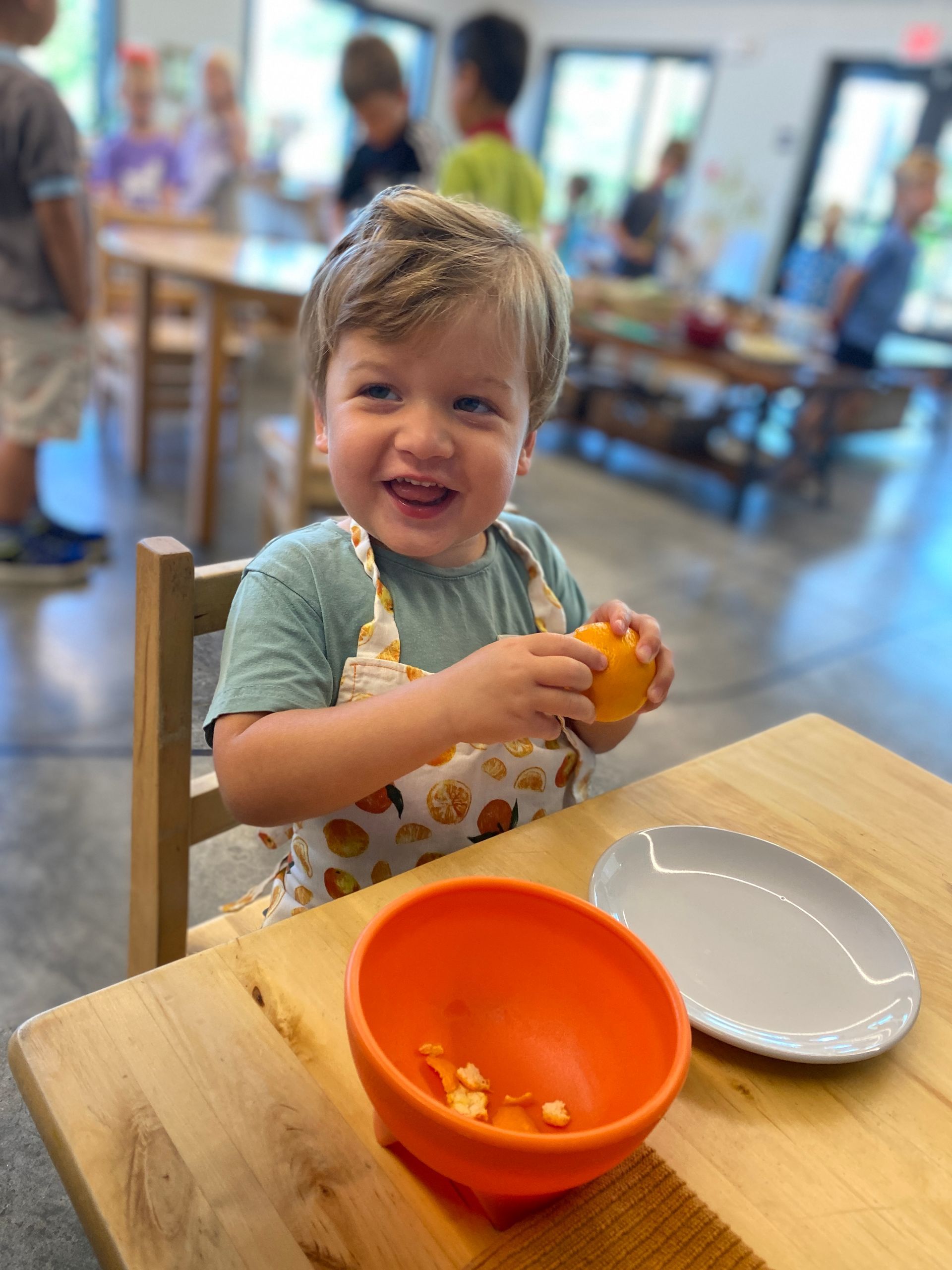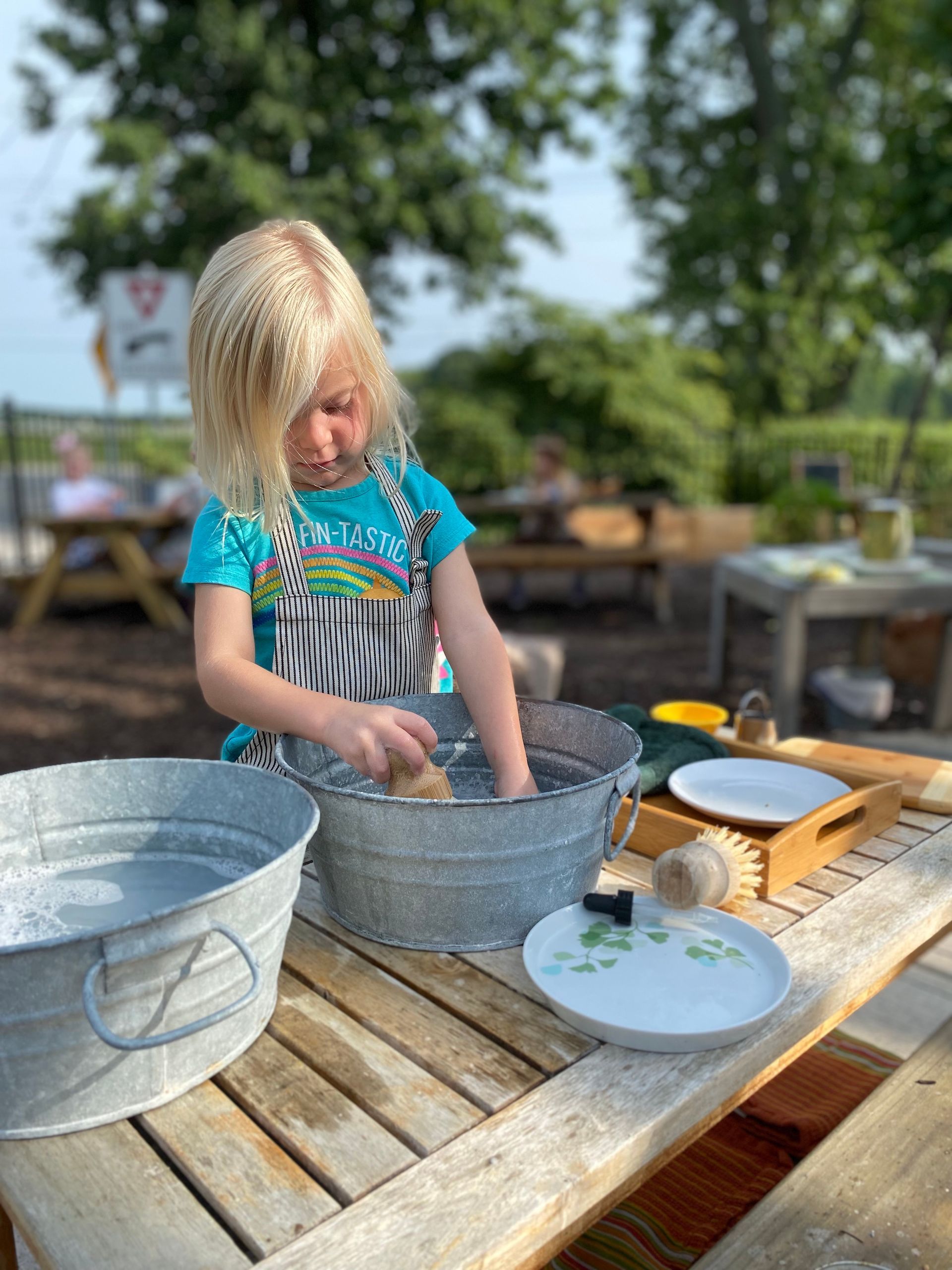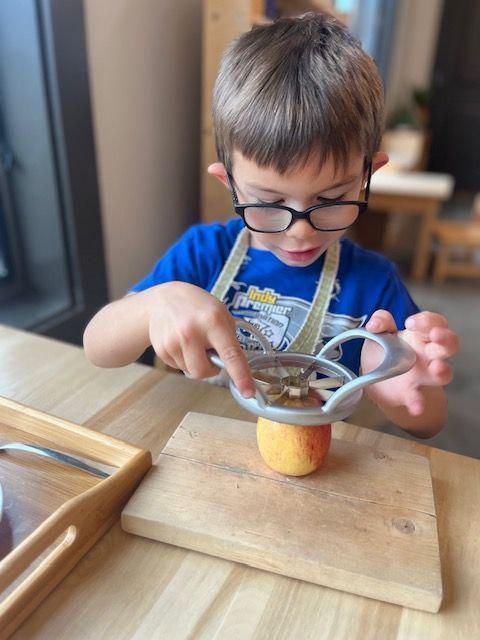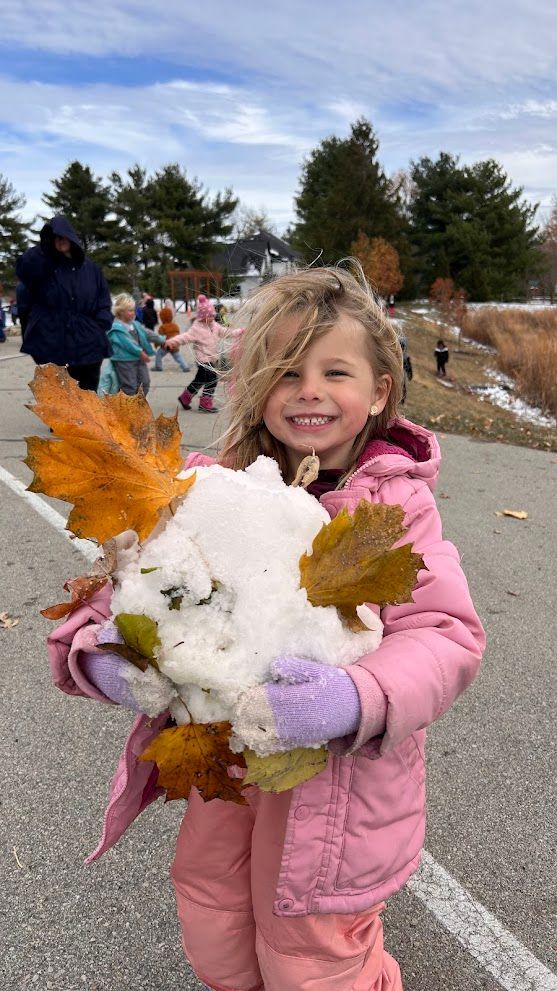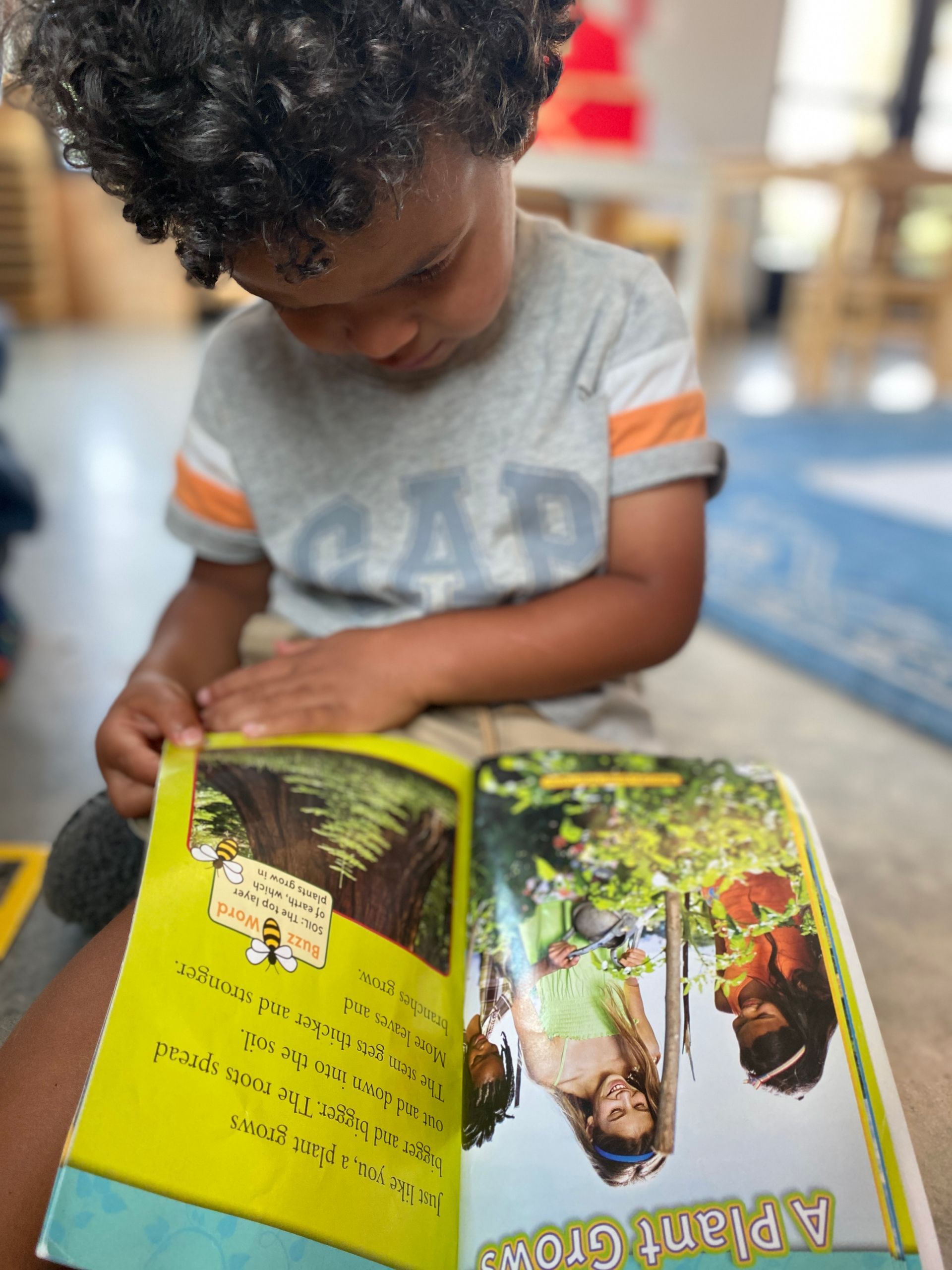“A child, who more than anyone else is a spontaneous observer of nature, certainly needs to have at his disposal material upon which he can work.”
MARIA MONTESSORI
Naturally Sourced Materials Promote Sensorial Exploration
Dr. Maria Montessori emphasized the use of real materials in the classroom. Materials such as brass, wood, wicker, cotton, metal, and glass provide important information to the child. Some warm to the touch and cool with the air. Others are rough and dense. Some are heavy and some are light. Some are durable and some are fragile. These provide a multi-sensorial experience for the child.
The Natural World Is Important for Development
By utilizing materials that come from nature in your child’s belongings, it puts them closer in touch to the real world around them. By doing this, you are encouraging a connection to the earth and the environment.
Natural Materials Last
Plastics fade in color, and their quality is not normally the best. Natural toys made from wood or metal pass the test of time. They are durable, classic, and enduring. Many materials go years in the classroom before needing to be replaced. The child can work with the material with no fear of damage.
Natural is Better for the Environment
Taking care of the environment is at the core of Montessori philosophy. It’s a positive that our materials don’t sit in landfills for years on end. Instead they can be recycled, re-purposed, or they will biodegrade.
Natural Materials Are Beautiful
The prepared environment is an important concept of Montessori learning. Natural materials are beautiful and real, thus making them more attractive and appealing to the child.
They Inspire
Simple and natural materials create opportunities for open-ended work. This allows children to make their own discoveries, test hypotheses, and develop new skills, particularly when the child plays independently.

